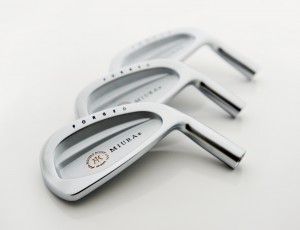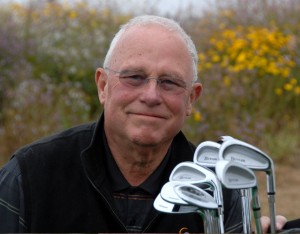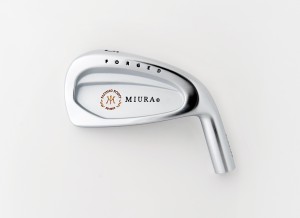Fabled for producing what are arguably the world’s highest-quality forged irons since the company’s founding in 1957, Japan’s Miura Golf doesn’t often release new products – – at least not as routinely as American companies on a rigid cycle. Only when Founder and Chairman Katsuhiro Miura is fully convinced that a design, its technology and manufacturing quality is right does the company release a new model. And so on April 1, Miura officially introduced its Passing Point 9003 forged cavity-back irons.
With the look and feel of clubs used by skilled players, Passing Point performs remarkably well for golfers who typically could not get a ball airborne with a forged blade.
PGA Master Clubfitter David Butler, who today makes only Miura irons at his shop near Half Moon Bay, California, secured several sets of Passing Point heads a couple months in advance of their release, and already has nearly a half-dozen clients ready to purchase a custom-assembled set. “These clubs have a very nice sight-line,” he explains. “The center of gravity is back further than other Miura irons and the sole is wider. There’s also a little more mass in the toe, which helps correct the toe shots that are common with average-ability players.”
The club drew its name from the notion that golfers pass through stages at different times of their lives. The casual competitor can turn into a fierce competitor, while other players must make concessions to age or infirmities. Golf clubs, too, can represent a passing point. With the 9003, it may well be a golfer headed in either direction.
“For the serious player it’s not an improvement over Miura’s 501 irons,” adds Butler. “But my first two sets went to women who are in their 50s, and I have a couple of older male clients who just love them. They get the look and feel of a forged club, but one with a low center of gravity that allows a person with a slower swing speed to get the ball into the air.”
In a release announcing the new product, Miura contends that in the company’s “tradition of melding functional golf design with an artistic eye, the wider sole helps witheffective turf interaction, yet is an elegant shape that doesn’t look oversized. Likewise, the release continues, “the offset is designed to flow naturally into the clubhead to preserve a confident look at address, but still benefit players who need some help squaring the clubface at impact.”
Miura-san and his sons, Yoshitaka and Shinei, set out to create a “friendly” golf club. With that wider sole, higher launch angle and offset, Passing Point is quite kindly to seniors, women and high-handicappers. And as with all Miura clubs, the weight and balance are obsessively consistent throughout the set.
Indeed. The total quality management minded Butler, who is also known as Doctor Grip, confirmed this by balancing each Passing Point 9003 clubhead on a pin. That’s right, he first balances the face of the club on a pinhead and marks the point, and then balances the bottom of the clubhead on the same pin. “It can sometimes take up to a half-hour to get just one point,” Butler explains, “but when you find that the two dots are aligned, the clubhead has perfect balance. You find that alignment in nearly every Miura iron, but not often in off-the-shelf sets from anyone else.”
Butler will be fitting most of the Passing Point sets with an ultra-light graphite shaft, suited to the swing speed of golfers suited to this specific clubhead. Passing Points are available in right-hand configurations only, and in 4-iron through pitching and gap wedges. Pricing begins at $225 per iron.
“My only wish is that Miura would also made a sand wedge and lob wedge in the same design,” laments Butler. “The same is true of the other iron lines. Now, Miura makes great wedges, but it would be better to have a complete set where each club looks the same.” Ah, the perfectionist.
Besides the new PP-9003, Miura Golf’s current product line also includes the CB-501 (Cavity Back Model); Blade (Tournament Blade Model); MC-102 (Mid-Size Cavity Model); CB-202 (Cavity Back Model); CB-301 (Cavity Model); and IC-2003 Utility Long Irons) irons; Wedges (Wedge Series and Black Wedge Series, each available in six lofts); Series 1957 By Miura Custom Grind Wedges; Small Blade model irons; Blade and Classic putters (two models); Precious Edition Driver, Fairway Wood and Utility Wood. Headquartered in the Japanese city of Himeji, where the highest quality samurai swords where forged in century’s past, Miura Golf’s corporate office is located in Vancouver, British Columbia. More information on Miura products can be found at www.miuragolf.com.



